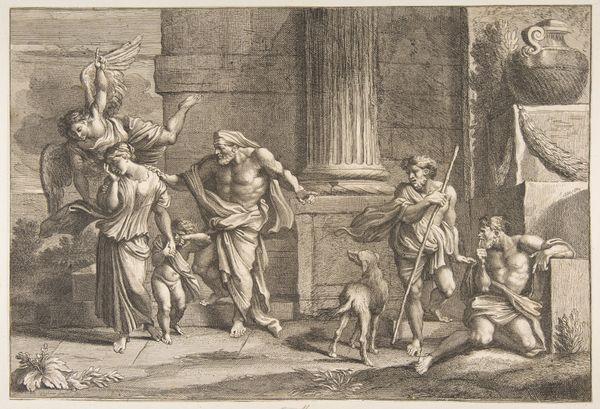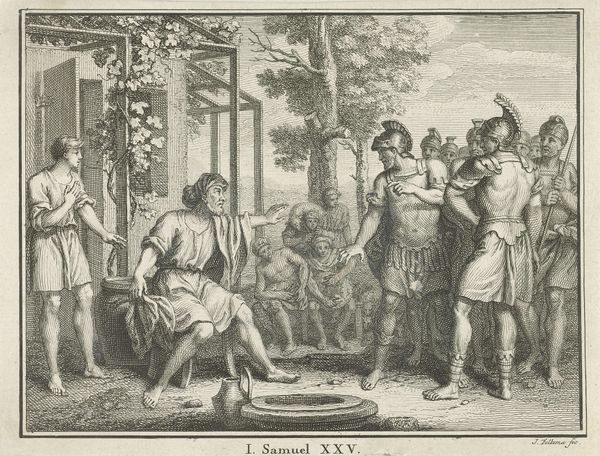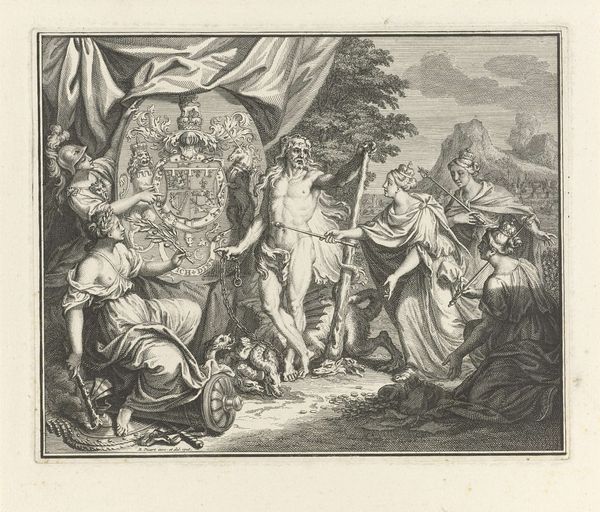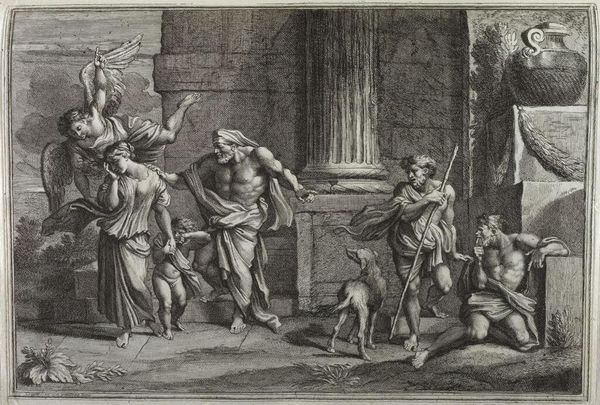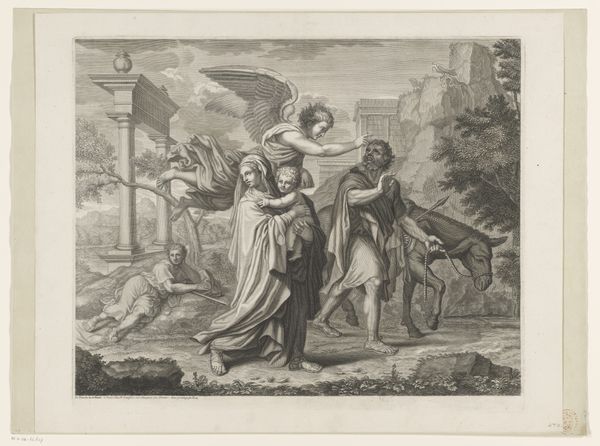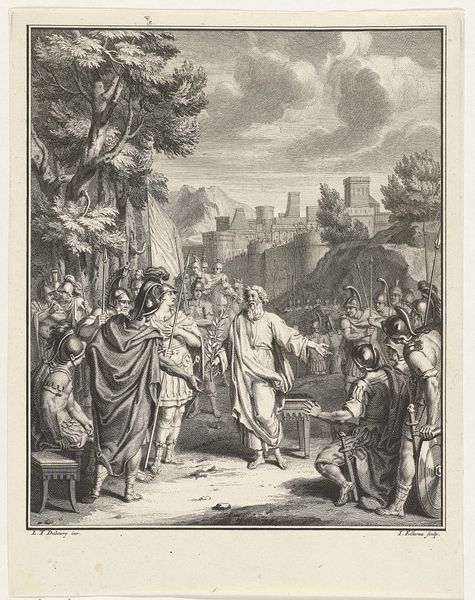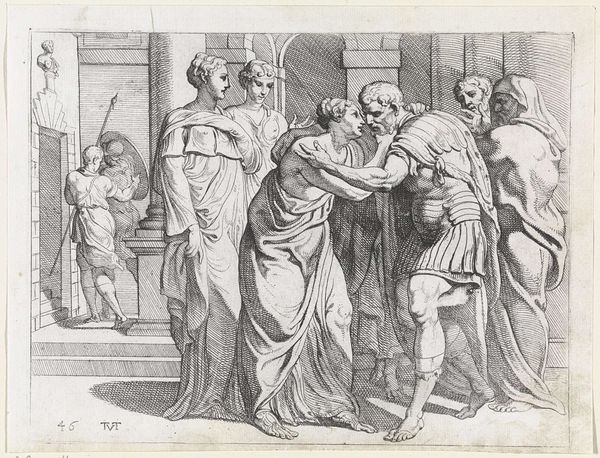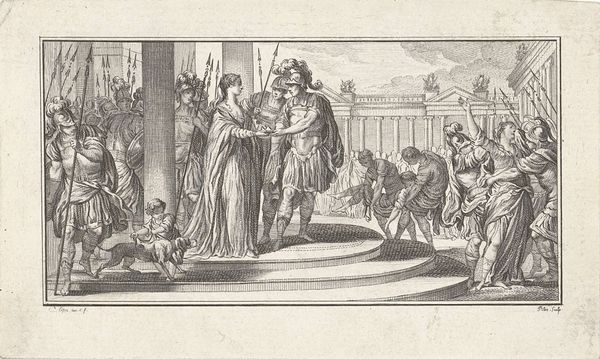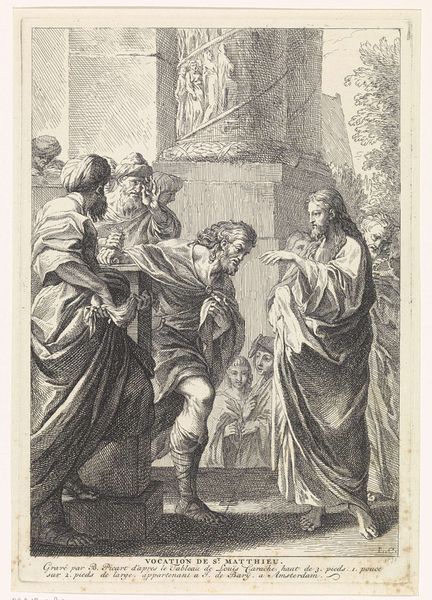
print, engraving
#
baroque
#
pen drawing
# print
#
pen illustration
#
figuration
#
line
#
history-painting
#
engraving
Dimensions: height 99 mm, width 140 mm
Copyright: Rijks Museum: Open Domain
Editor: This is Jacob Folkema's "Aeneas and the Sibyl of Cumae," created sometime between 1703 and 1767. It's an engraving, full of incredibly fine lines. I’m struck by the theatrical composition and how everyone seems frozen in place. What do you see in this piece? Curator: The frozen moment you observe speaks volumes. Consider the loaded symbols: Aeneas, the archetypal hero, his hand clasped by the Sibyl, a conduit to the underworld. That shared touch—isn't it interesting? Folkema places the destiny of Rome, literally, in their hands. Notice the scene unfolding in the background—sacrifices being made, preparing Aeneas for his descent. Editor: So, the ritualistic aspect is crucial? Is that what makes this more than just a historical scene? Curator: Precisely! The image serves as a cultural touchstone, connecting viewers to a mythic past. The horse head—perhaps a memento from the Trojan war— is being placed in the center to be sacrificed. It isn't merely illustrating Virgil; Folkema’s encoding layers of meaning and invoking cultural memory, which in Baroque style became rather prevalent. Do you see other familiar visual motifs here? Editor: I guess the helmet would stand for the glory of wars to be won or lost in establishing this future, Roman, legacy? Curator: Exactly! Each detail functions as a visual mnemonic, sparking associations and reminding us of the weight of history. Aeneas strides forward. The Sibyl shows us the entrance to an age. Editor: It’s like a symbolic history lesson embedded in a single frame! Thanks for revealing those layers; I’d only considered the surface narrative before. Curator: It’s rewarding to uncover the cultural currents beneath. Art serves to communicate universal memories from our past, making works such as these always ripe for the picking.
Comments
No comments
Be the first to comment and join the conversation on the ultimate creative platform.

